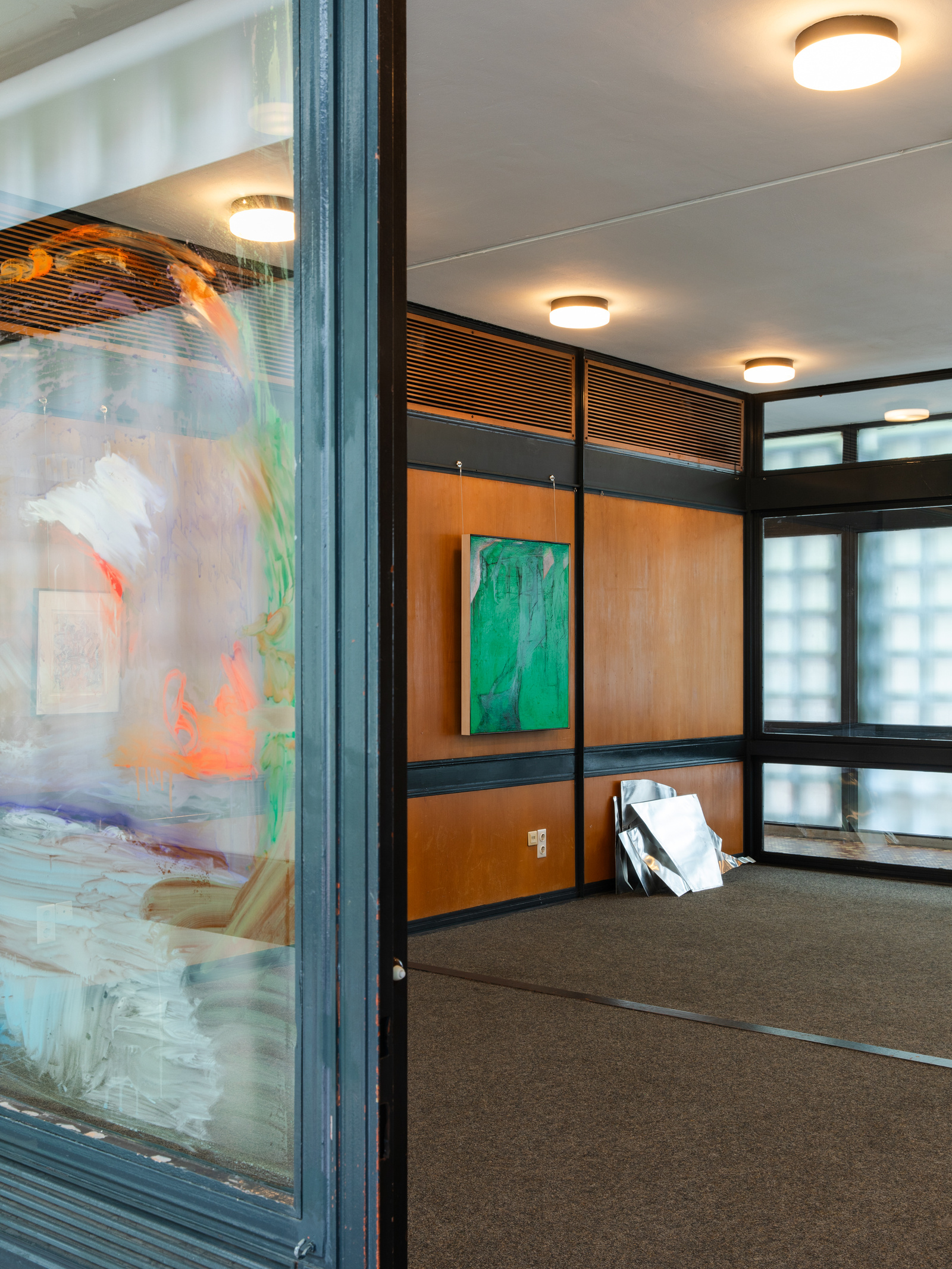Visit us
CCA Berlin is located in the foyer building of the Kaiser Wilhelm Memorial Church.
CCA Berlin gGmbH
Breitscheidplatz
10789 Berlin
Show on Google Maps.
Transportation:
U Kurfürstendamm, S+U Zoologischer Garten
Bus M19, M29, M46, X9, X10, X34, 100, 109, 110, 145, 200, 204, 245
If you have any questions, you can reach us here:
+49 30 20673287
info @ cca.berlin
Please note: We do not accept portfolios, proposals or unsolicited applications. Please check our website for vacancies, open calls and other opportunities for collaboration and cooperation.

CCA Berlin, Kaiser-Wilhelm-Gedächtnis-Kirche, Foyer-Building. Photo: Diana Pfammatter
Opening hours +
Entrance fee
Tue–Sat: 11 AM-6 PM
Free entry
Open for all
Accessibility
CCA Berlin is located in the foyer building of the "Kaiser-Wilhelm-Gedächtniskirche" (Kaiser Wilhelm Memorial Church). The entrance to CCA Berlin is located between the foyer building and the new church building. There is an entrance on the south side (Tauentzienstraße) and on the north side (Bikini Haus). The entrance is marked by a sign on both sides.
Access to the CCA Berlin is via 5 steps. A ramp to the entrance is located next to the chapel, on the east side of the church. We are happy to help you open the door. If you need help or have any questions, please call +49 30 20673287.
The nearest wheelchair-accessible restroom is located in the new church building.
The exhibitions and events at the CCA Berlin can be visited with children. The ramp for baby carriages is located next to the chapel, on the east side of the church. Baby carriages are permitted in the exhibition.
A changing table is not available.
About our building
The Kaiser Wilhelm Memorial Church, once a tribute to the first German Emperor, stands as a symbol of Berlin’s history. Built between 1891 and 1895 and designed by Franz Schwechten in the Neo-Romanesque style, it was commissioned by Kaiser Wilhelm II to honor his grandfather, Kaiser Wilhelm I.
Severely damaged in a bombing raid during World War II, the church’s surviving ruins became a poignant memorial to war and destruction. In the postwar years, debates over its fate shaped public discourse in West Berlin, where its central and symbolic location on Breitscheidplatz held both urban and political significance.
In the early 1960s, renowned architect Egon Eiermann conceived a building ensemble that uniquely merged the old with the new. At its core stands the preserved tower ruin. Four modern structures are grouped around the remaining tower: an octagonal nave, a rectangular foyer, a hexagonal bell tower, and a rectangular chapel. With their clean, geometric forms and the use of concrete, steel and glass, these buildings embody the functional aesthetic of postwar modernism and continue to characterize Breitscheidplatz.
Since April 2024, the iconic foyer building has become the home of CCA Berlin. For the building’s facade – as well as the three surrounding structures – the architect chose a distinctive design of concrete honeycomb panels, a defining feature of the ensemble's appearance. The foyer building itself was conceived as a double-skin structure: an outer shell of concrete honeycombs encloses the inner facade made out of glass and steel which creates an interplay of transparency and structure. Eiermann also designed the foyer’s interior, including the wood-paneled rooms. The hallway’s floor which forms a circular route through the foyer is paved with round ceramic tiles which are further echoed as design elements in various sizes and colors throughout the adjacent buildings.
Once a social outreach and counseling center run by the Berlin City Mission, the foyer was a building of support for people in need for many years. Following the closure of the facility in 2015, the space was occasionally used for German language courses for asylum seekers from a nearby refugee shelter. Now, after standing vacant for nearly a decade, CCA Berlin brings people together again in these historic premises by activating the foyer building with various exhibition formats and a multidisciplinary public program.



Foyer, Kaiser-Wilhelm-Gedächtnis-Kirche, 2024. Photos: Diana Pfammatter/CCA Berlin